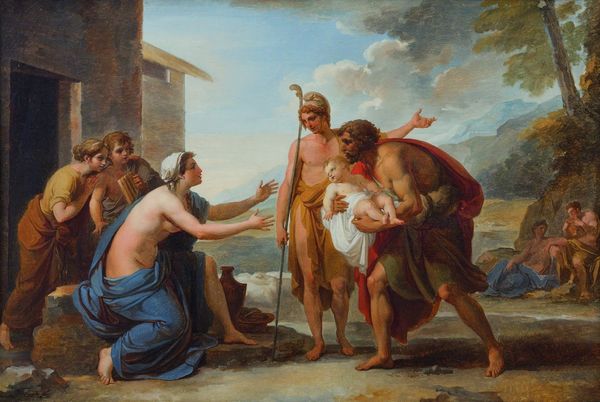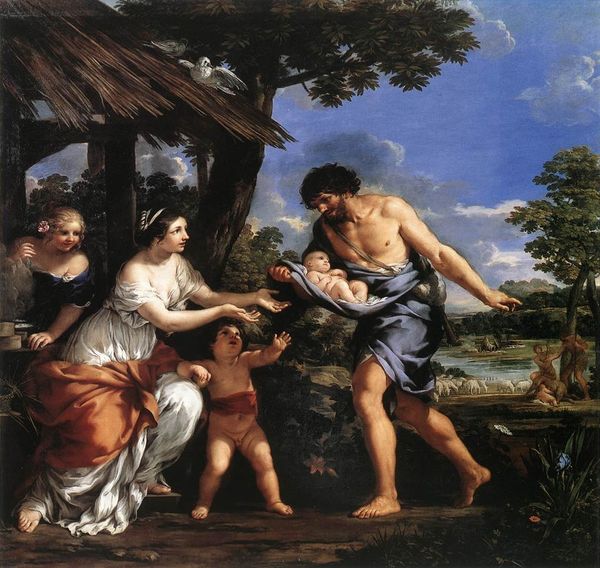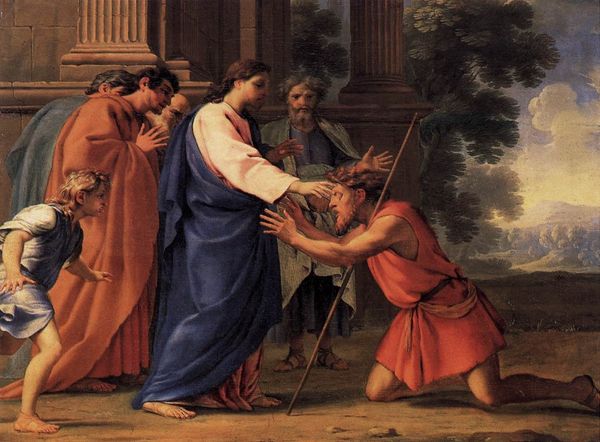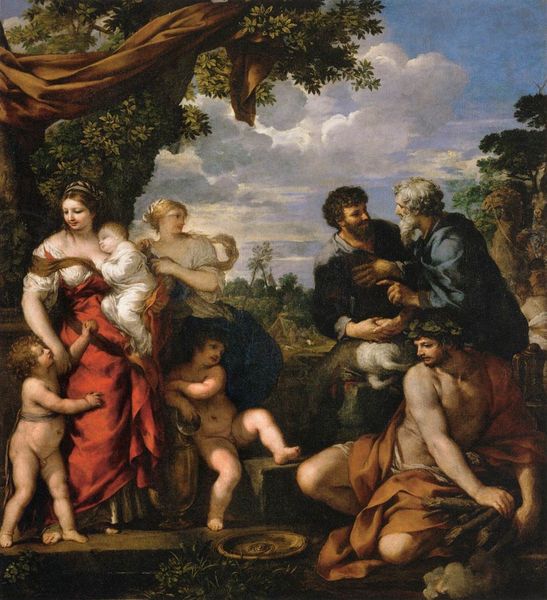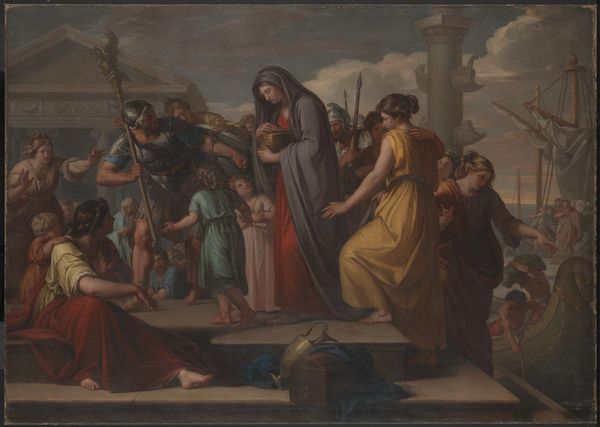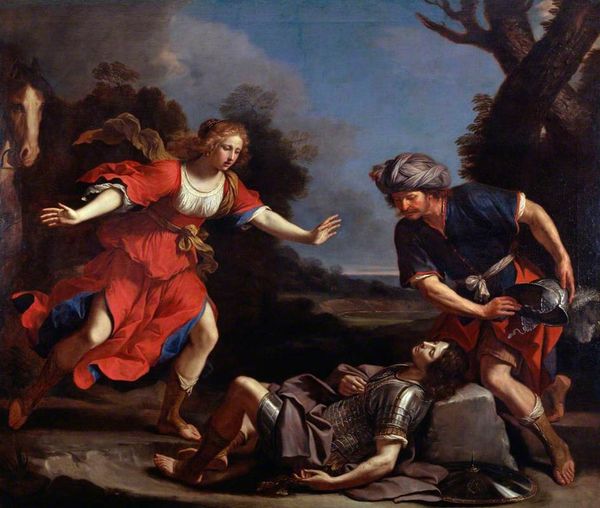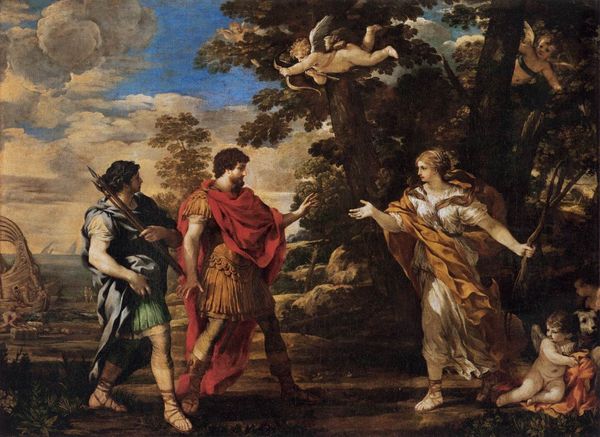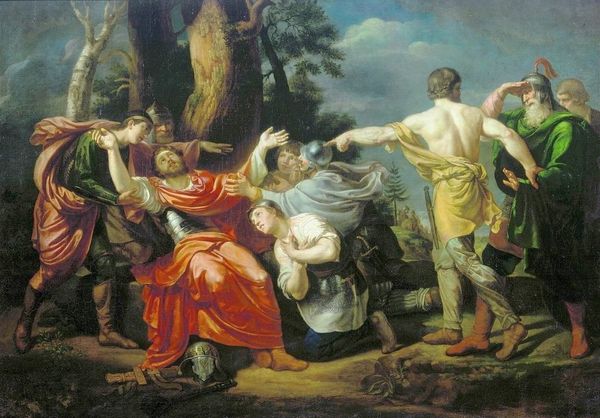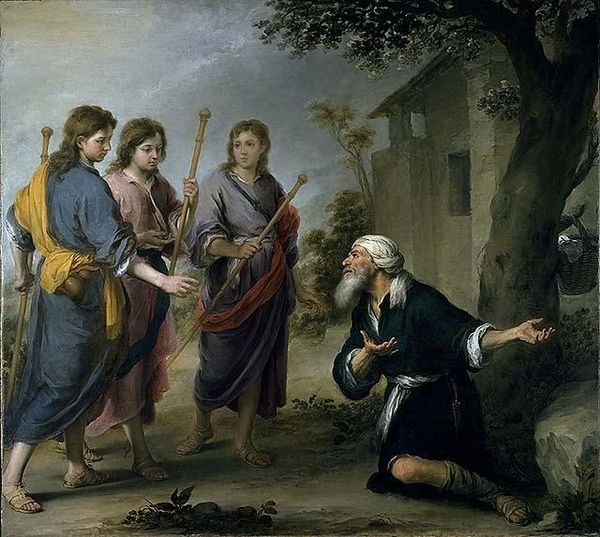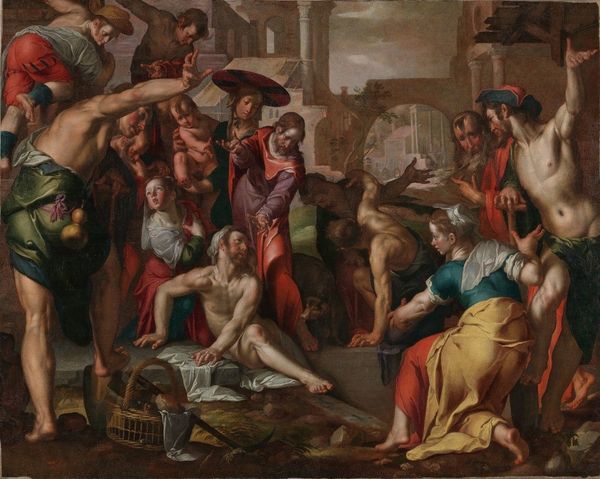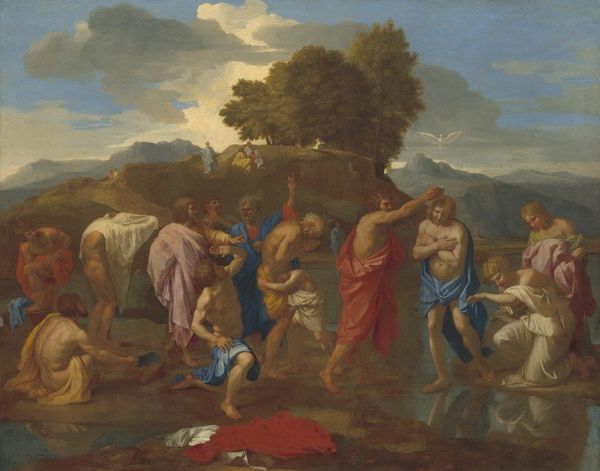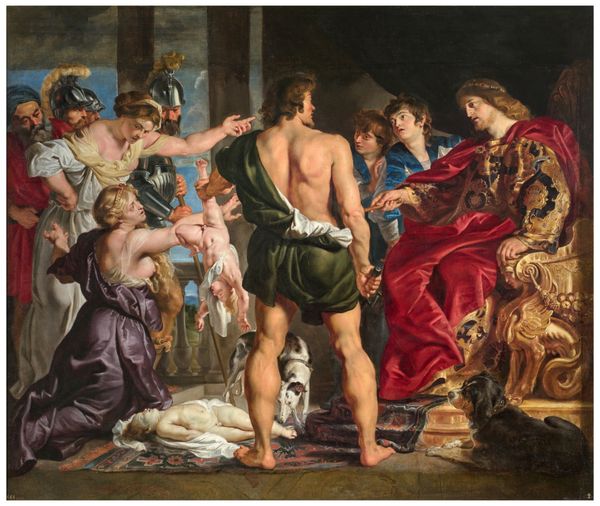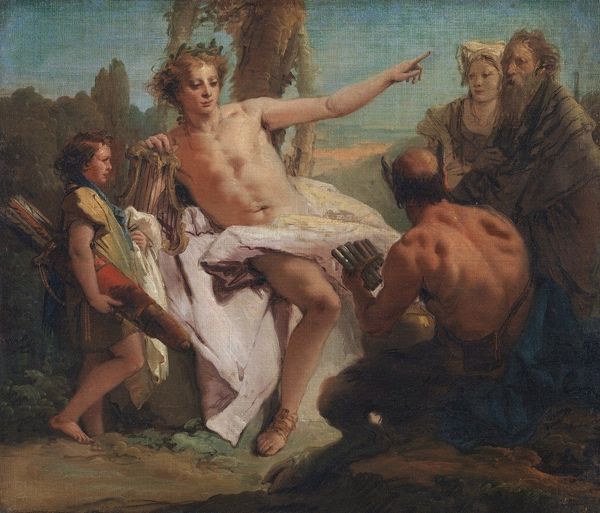
oil-paint
#
allegory
#
baroque
#
oil-paint
#
landscape
#
figuration
#
oil painting
#
classicism
#
mythology
#
history-painting
Dimensions: 121 x 185 cm
Copyright: Public domain
Nicolas Poussin made this oil painting, titled "Et in Arcadia ego," at some point during his career in France. The painting depicts a scene of shepherds encountering a tomb in an idealized landscape. The inscription on the tomb translates to "Even in Arcadia, there am I," with "I" referring to death. Poussin’s painting reflects the cultural and intellectual climate of 17th-century Europe. The rise of humanism and scientific inquiry led to a renewed interest in classical antiquity and a focus on reason and observation. The establishment of institutions like the Académie Royale de Peinture et de Sculpture shaped artistic production and promoted certain aesthetic ideals based on classical models. In this context, Poussin's work engages with philosophical questions about mortality and the human condition. It invites viewers to reflect on the transience of life and the inevitability of death, even in the most idyllic settings. To understand it better, we could delve into the writings of classical philosophers, the patronage networks of the French court, and the theoretical debates within the Académie. Ultimately, the meaning of this art is contingent on the cultural and institutional context in which it was created.
Comments
No comments
Be the first to comment and join the conversation on the ultimate creative platform.
